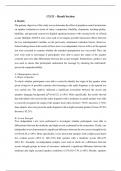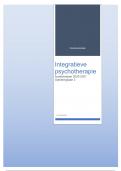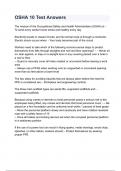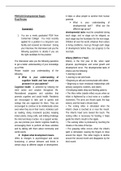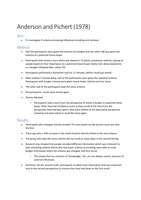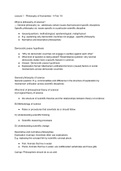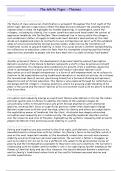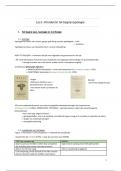CLUE – Result Section
4. Results
The primary objective of this study was to determine the effect of prejudice control instructions
on speaker evaluations in terms of status, competence, likability, dynamism, teaching quality,
hirability, and personal concern for English speaking lecturers with varying levels of a Dutch
accent. Multiple ANOVA tests were used to investigate possible interaction effects between
the two interdependent variables on the previously mentioned evaluation factors. However,
before looking closer at the results of these tests, two independent t-test as well as a Chi-squared
test were executed to examine whether the intended manipulation was successful. Thus, the
tests were used to investigate if participants were able to guess the origin of the speaker
correctly and were able differentiate between the accent strength. Furthermore, another t-test
was used to ensure that participants understood the message by checking the individuals’
perceived comprehensibility.
4.1 Manipulation checks
I. Origin of Speaker
To check whether participants were able to correctly identify the origin of the speaker when
given a long list of possible countries after listening to the audio fragment, a chi-squared test
was carried out. The analysis indicated a significant association between the accent and
speakers language background (χ2(1)=63.25, p<.001). More specifically, the results showed
that individuals who received the audio fragment with a moderate accented speaker were able
to correctly recognize the origin of the speaker more often (Correct: 75.0%, Incorrect: 17.8%)
than subjects who were given the audio fragment with a slight accented speaker (Correct 25.0%,
Incorrect: 82.2%).
II. Accent Strength
Two independent t-test were performed to investigate whether participants were able to
differentiate between the moderate and slight accent as planned by the researchers. Firstly, one
independent t-test demonstrated a significant difference between the two accent strength levels
(t(192)=6.26, p<.001). More specifically, it was shown that speakers with a slight accent had a
less evident accent (M=3.11, SD=1.93) than speaker with a moderate accent (M=4.79,
SD=1.81). Secondly, an independent samples t-test used to check for a difference between
accent strength groups in terms of naiveness, indicated a significant difference between the
moderate and slight accented speaker conditions (t(178.18)=7.39, p<.001). Hereby, speakers
, with a moderate accent (M=4.77, SD=1.95) were perceived to sound less like a native English
speaker compared to those with a slight accent (M=2.86, SD=1.58).
4.2 Understanding the message
To test participants understanding of the message in the speech samples, an independent
samples t-test regarding accent strength and perceived comprehensibility was carried out. The
t-test demonstrated no significant differences between the groups (t (192.94)=0.52, p=.603).
Hence, there was no main effect of accent strength (moderate vs light) on subjects
understanding of the message.
4.3 Speaker evaluation
I. Status
A two-way ANOVA test was conducted to investigate the effect of accent strength and
prejudice control on perceived status of the speaker. The results of the test showed a significant
interaction effect (F(2,188)=3.72, p=.026) on the evaluation factor status. Furthermore, a
significant main effect of accent strength on status with F(1,188)= 15.00 (p < .001) was found.
Meanwhile, prejudice control was not revealed to have a main effect on the variable (p=.079).
An additional one-way ANOVA test was used to explore the interaction effect
regarding the two accent groups. The ANOVA test did not indicate a significant effect of
accent on either the implicit instruction group (F (1,64)=0.27, p=.602) or the explicit
instruction group (F(1,60)=3.76, p=.057). However, it was shown that accent strength does
have a significant effect on the control group (F(1,64)=15.21, p<.001) whereby speakers with
a slight accent (M=5.39, SD=0.89) were rated higher in terms of status when compared to
moderately accented speakers (M=4.36, SD=1.22).
Another one-way ANOVA with prejudice control instruction groups was executed. The
test did not reveal a significant effect of prejudice control for speakers with a slight accent
(F(2,97)=1.87, p=.160). However, it was shown that prejudice control does have a significant
effect for the moderately accented speaker group (F(2,91)=4.16, p=.019). More specifically, as
seen in Table 1, for the moderately accented speaker, it was found that the control group
(M=4.36, SD=1.22, p=.025, Bonferroni-correction) perceived the status of the speaker as lower
than the group which was provided with implicit instructions (M=5.04, SD=0.71). There was
no significant difference in the perceived status for the moderately accented speaker between
the explicit instruction group (M = 4.46, SD = 1.06) and the implicit instruction group (p = .092,
Bonferroni-correction) nor between the explicit instruction group and the control group
(p=1.000, Bonferroni-correction) (see Table 1).
4. Results
The primary objective of this study was to determine the effect of prejudice control instructions
on speaker evaluations in terms of status, competence, likability, dynamism, teaching quality,
hirability, and personal concern for English speaking lecturers with varying levels of a Dutch
accent. Multiple ANOVA tests were used to investigate possible interaction effects between
the two interdependent variables on the previously mentioned evaluation factors. However,
before looking closer at the results of these tests, two independent t-test as well as a Chi-squared
test were executed to examine whether the intended manipulation was successful. Thus, the
tests were used to investigate if participants were able to guess the origin of the speaker
correctly and were able differentiate between the accent strength. Furthermore, another t-test
was used to ensure that participants understood the message by checking the individuals’
perceived comprehensibility.
4.1 Manipulation checks
I. Origin of Speaker
To check whether participants were able to correctly identify the origin of the speaker when
given a long list of possible countries after listening to the audio fragment, a chi-squared test
was carried out. The analysis indicated a significant association between the accent and
speakers language background (χ2(1)=63.25, p<.001). More specifically, the results showed
that individuals who received the audio fragment with a moderate accented speaker were able
to correctly recognize the origin of the speaker more often (Correct: 75.0%, Incorrect: 17.8%)
than subjects who were given the audio fragment with a slight accented speaker (Correct 25.0%,
Incorrect: 82.2%).
II. Accent Strength
Two independent t-test were performed to investigate whether participants were able to
differentiate between the moderate and slight accent as planned by the researchers. Firstly, one
independent t-test demonstrated a significant difference between the two accent strength levels
(t(192)=6.26, p<.001). More specifically, it was shown that speakers with a slight accent had a
less evident accent (M=3.11, SD=1.93) than speaker with a moderate accent (M=4.79,
SD=1.81). Secondly, an independent samples t-test used to check for a difference between
accent strength groups in terms of naiveness, indicated a significant difference between the
moderate and slight accented speaker conditions (t(178.18)=7.39, p<.001). Hereby, speakers
, with a moderate accent (M=4.77, SD=1.95) were perceived to sound less like a native English
speaker compared to those with a slight accent (M=2.86, SD=1.58).
4.2 Understanding the message
To test participants understanding of the message in the speech samples, an independent
samples t-test regarding accent strength and perceived comprehensibility was carried out. The
t-test demonstrated no significant differences between the groups (t (192.94)=0.52, p=.603).
Hence, there was no main effect of accent strength (moderate vs light) on subjects
understanding of the message.
4.3 Speaker evaluation
I. Status
A two-way ANOVA test was conducted to investigate the effect of accent strength and
prejudice control on perceived status of the speaker. The results of the test showed a significant
interaction effect (F(2,188)=3.72, p=.026) on the evaluation factor status. Furthermore, a
significant main effect of accent strength on status with F(1,188)= 15.00 (p < .001) was found.
Meanwhile, prejudice control was not revealed to have a main effect on the variable (p=.079).
An additional one-way ANOVA test was used to explore the interaction effect
regarding the two accent groups. The ANOVA test did not indicate a significant effect of
accent on either the implicit instruction group (F (1,64)=0.27, p=.602) or the explicit
instruction group (F(1,60)=3.76, p=.057). However, it was shown that accent strength does
have a significant effect on the control group (F(1,64)=15.21, p<.001) whereby speakers with
a slight accent (M=5.39, SD=0.89) were rated higher in terms of status when compared to
moderately accented speakers (M=4.36, SD=1.22).
Another one-way ANOVA with prejudice control instruction groups was executed. The
test did not reveal a significant effect of prejudice control for speakers with a slight accent
(F(2,97)=1.87, p=.160). However, it was shown that prejudice control does have a significant
effect for the moderately accented speaker group (F(2,91)=4.16, p=.019). More specifically, as
seen in Table 1, for the moderately accented speaker, it was found that the control group
(M=4.36, SD=1.22, p=.025, Bonferroni-correction) perceived the status of the speaker as lower
than the group which was provided with implicit instructions (M=5.04, SD=0.71). There was
no significant difference in the perceived status for the moderately accented speaker between
the explicit instruction group (M = 4.46, SD = 1.06) and the implicit instruction group (p = .092,
Bonferroni-correction) nor between the explicit instruction group and the control group
(p=1.000, Bonferroni-correction) (see Table 1).

